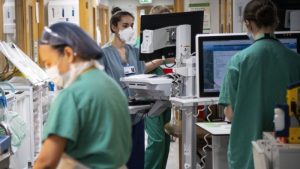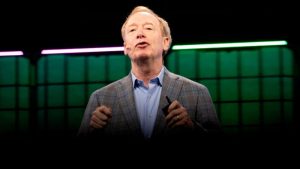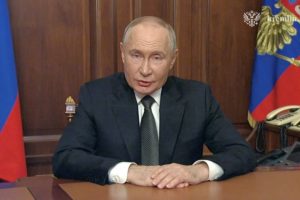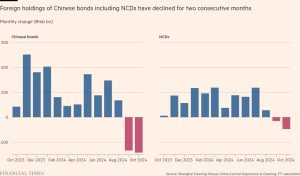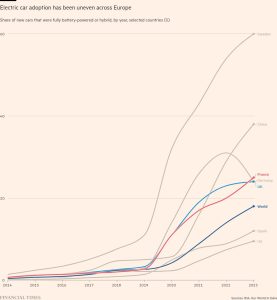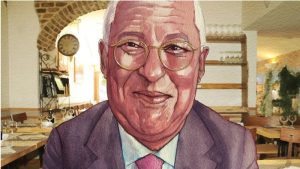How artificial intelligence won the Nobel Prizes
Sir Demis Hassabis discovered he had won the Nobel Prize in chemistry this week when his wife — also a scientific researcher — received several calls on Skype to urgently request his phone number.
“My mind was completely frazzled, which hardly ever happens. It was . . . almost like an out-of-body experience,” said Hassabis, co-founder and chief executive of Google DeepMind, the artificial intelligence division of the Silicon Valley search giant.
The chemistry Nobel, which Hassabis shared with his colleague John Jumper and US biochemist David Baker, was won for unlocking an impossible problem in biology that had remained unsolved for 50 years: predicting the structure of every protein known to humanity, using an AI software known as AlphaFold.
Having cracked that long-standing challenge, with widespread implications in science and medicine, Hassabis has his sights set on climate change and healthcare. “I want us to help solve some diseases,” he told the Financial Times.
His team is working on six drug development programmes with drugmakers Eli Lilly and Novartis, which focus on disease areas such as cancers and Alzheimer’s. Hassabis said he expects to have a drug candidate in clinical trials within two years.
His other big areas of focus are using AI to model the climate more accurately, and to cross the ultimate frontier in AI research: invent machine intelligence at par with human intelligence.
“When we look back in 10 years, I hope [AI] will have heralded a new golden era of scientific discovery in all these different domains,” said Hassabis, who was formerly a neuroscientist and video game designer. “That’s what got me into AI in the first place. I see it as the ultimate tool in accelerating scientific research.”
The DeepMind duo was recognised on Wednesday, a day after former Google colleague and veteran AI scientist Geoffrey Hinton won the physics prize alongside physicist John Hopfield for their work on neural networks, the foundational technology for modern AI systems that underpin healthcare, social media, self-driving cars — and AlphaFold itself.
The recognition of AI breakthroughs highlights a new era in research, emphasising the importance of computing tools and data science in cracking complex scientific problems at far shorter timescales, in everything from physics to mathematics, chemistry and biology.
“It’s obviously interesting that the [Nobel] committee has decided to make a statement like this by having the two together,” Hassabis said.
The awards also encapsulate AI’s promises and potential pitfalls.
Hopfield and Hinton were pioneers in the discipline in the early 1980s. Hinton, who is 76 and left Google last year, said he didn’t plan to do further research. He instead intends to advocate for work on the safety of AI systems, and for governments to facilitate it.
By contrast, the DeepMind pair won for work unveiled mainly in the past five years, and remain extremely optimistic about its societal impact.
“The impact of [AI] in particular on science but also on the modern world more broadly is now very, very clear,” said Maneesh Sahani, director of the Gatsby unit at University College London, a research institute focused on machine learning and theoretical neuroscience. Hinton was the Gatsby’s founding director in 1998, while Hassabis worked as a postdoctoral researcher there in 2009, eventually spinning out DeepMind from the UCL institute in 2010.
“Machine learning is showing up all over the place, from people analysing ancient text in forgotten languages, to radiographs and other medical imaging. There is a toolkit that we now have that will push science and academic disciplines forward in all sorts of different directions,” said Sahani, who is also a neuroscience professor.
AlphaFold’s recent iterations have “ramifications across all of medicine, biology and many other areas” because they are so fundamental to living organisms, said Charlotte Deane, a professor of structural bioinformatics at Oxford university.
“Many were sceptical when they started, but very quickly their program outperformed all other programs to predict protein structures,” said Venki Ramakrishnan, a biologist who won the Nobel Prize in chemistry in 2009 for his work related to protein synthesis. “It really dramatically changed the field.”
AlphaFold has been used by more than 2mn scientists to, among other things, analyse the malarial parasite to develop a vaccine, improve plant resistance to climate change, and to study the structure of the nuclear pore — one of the largest protein complexes in the human body.
Rosalyn Moran, a neuroscience professor at King’s College London, and chief executive of AI start-up Stanhope AI said: “Tool building is blue collar scientific work . . . they are often the unsung heroes of science. For me that was the most exciting part of the award.”
AlphaFold still has shortcomings as reported by its creators earlier this year, including “hallucinations” of “spurious structural order” in cell regions that are in fact disordered. Another challenge facing the use of AI for scientific research is that some important fields of investigation may be less rich than protein analysis in experimental data.
In the physics Nobel, Hinton and Hopfield’s work used fundamental concepts from physics and neuroscience to develop AI tools that can process patterns in large information networks.
The Boltzmann machine, which Hinton invented, was able to learn from specific examples rather than instructions. The machine was then able to recognise new examples of categories it had been trained on, such as images of cats.
This type of learning software, known as neural networks, now form the basis of most AI applications, such as facial recognition software and large language models, the technique that underpins ChatGPT and Google’s Gemini. One of Hinton’s former students, Ilya Sutskever, was co-founder and chief scientist of ChatGPT-maker OpenAI.
“I would say I am someone who doesn’t really know what field he’s in but would like to understand how the brain works,” said Hinton, a computer scientist and cognitive psychologist, during a press conference this week. “And in my attempts to understand how the brain works, I’ve helped to create a technology that works surprisingly well.”
The AI prizes have also brought to the fore the interconnected nature of scientific discoveries, and the need for sharing of data and expertise — an increasingly rare phenomenon in AI research occurring inside commercial outfits such as OpenAI and Google.
Neuroscience and physics principles were used to develop the AI models of today, while the data generated by biologists helped invent the AlphaFold software.
“Scientists like me have traditionally solved protein shapes using laborious experimental methods which can take years,” said Rivka Isaacson, professor of molecular biophysics at King’s College London, who was an early beta tester of AlphaFold. “It was however these solved structures, which the experimental world deposits for public use, that were used to train AlphaFold.”
She added that the AI technique had allowed scientists like her to “skip ahead to probe deeper into protein function and dynamics, asking different questions and potentially opening up whole new areas of research”.
Ultimately, AI — like electron microscopy or X-ray crystallography — remains an analytical tool, not an independent agent conducting original research. Hassabis insists the technology cannot replace the work of scientists.
“The human ingenuity comes in — asking the question, the conjecture, the hypothesis, our systems can’t do any of that,” he said. “[AI] just analyses data right now.”
#artificial #intelligence #won #Nobel #Prizes
